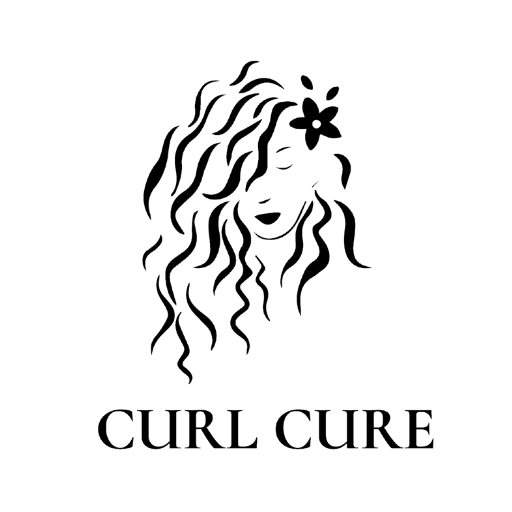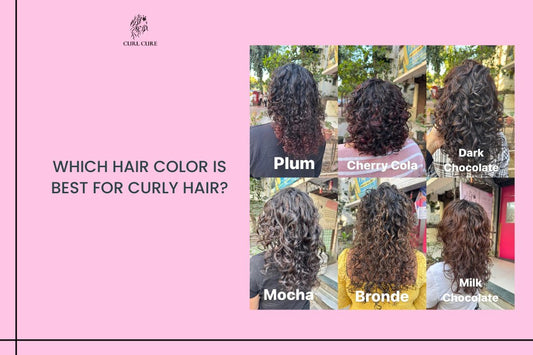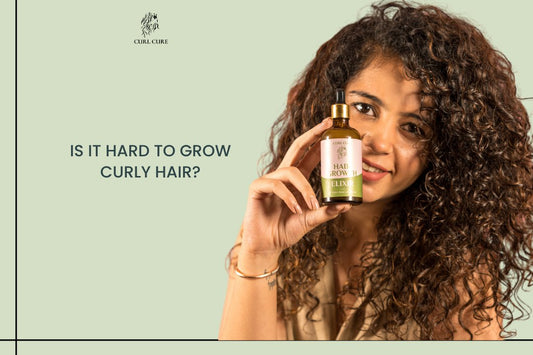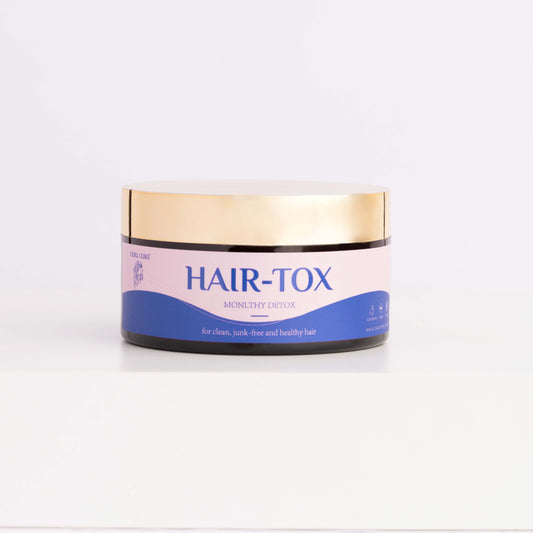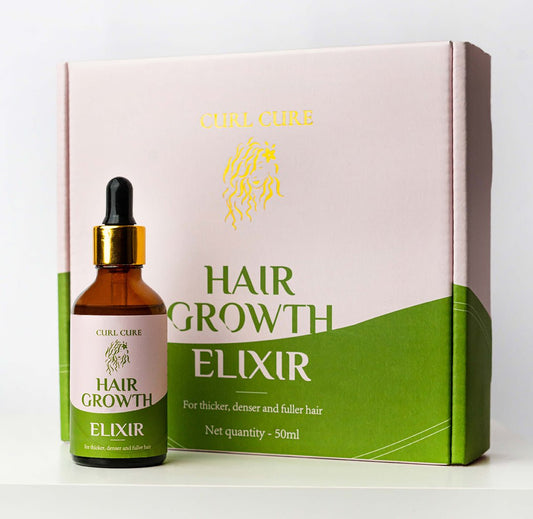Discover your curl type and master tips for healthy, fabulous curls tailored to you. Tackle daily challenges with Curl Cure for your best hair days!
| Table of Contents |
|---|
| 1. What is a Curly Hair Routine? |
| 2. Understanding Curly Hair Types |
| - Identifying Different Curl Patterns |
| - Factors Influencing Curl Type |
| 3. Essential Steps in a Curly Hair Routine |
| - Cleansing |
| - Conditioning |
| - Styling |
| 4. Techniques for Managing Curly Hair |
| - Plopping |
| - Diffusing |
| 5. Tips for Maintaining Healthy Curly Hair |
| - Avoiding Heat Damage |
| - Trimming Regularly |
| - Protecting Hair at Night |
| 6. Dealing with Common Curly Hair Issues |
| - Frizz Control |
| - Scalp Health |
| 7. Conclusion |
1. What is a Curly Hair Routine?
Gorgeous curly hair demands TLC. Embracing one's natural texture is a journey - from understanding curl patterns to mastering specialized care techniques. We're here to simplify the process. There's no one-size-fits-all for curl routine. Your curl type needs a customized routine that helps your curls shine. These routines typically involve a combination of cleansing, conditioning, styling, and maintenance techniques tailored to individual curl types. We want to arm you with insider tips so you can develop regimens for your hair to thrive.
2. Understanding Curly Hair Types
Identifying Different Curl Patterns
Curly hair comes in all kinds of patterns - from loose waves to tight coils. To pick the right products and styling, you first need to figure out your curl type. Looser curls may just need some lightweight stuff to encourage the waves. Tighter curls need more moisture to help with frizz and shaping. There's no one perfect routine - it depends on your curl pattern and hair thickness.
Factors Influencing Curl Type
3. Essential Steps in a Curly Hair Routine
Cleansing
Opting for a sulfate-free shampoo can be a game-changer for your hair care routine. Sulfates, commonly found in many traditional shampoos, can be quite harsh and drying on the hair and scalp. By choosing a sulfate-free shampoo, you can cleanse your hair without causing unnecessary damage or dryness. By incorporating sulfate-free shampoos into your routine, you can maintain a balanced scalp environment, retain essential oils for hair health, and promote overall hair hydration. These methods are particularly beneficial for individuals with curly or textured hair, as they help preserve natural moisture and enhance curl definition.
Conditioning
Deep conditioning is like a tall glass of water for your curls, providing them with the nourishment and moisture they need to thrive. By infusing your curls with a deep conditioner helps to improve their elasticity, making them more resilient and less prone to breakage. So, if you want to keep your curls looking luscious and healthy, adding a deep conditioner to your routine is a must-do.
Styling
Products such as curl creams and aloe vera gels, that are specifically designed to enhance curls work their magic by defining each curl and giving them that extra definition. Techniques like brush-styling or finger-coiling help to encourage your natural curl pattern, resulting in more defined and bouncy curls. Plus, these methods can also help minimize frizz, keeping your curls looking smooth and sleek. So, if you're looking to amp up your curl game, incorporating curl creams, aloe vera gels and techniques into your routine is the way to go.
4. Techniques for Managing Curly Hair
Plopping
Plopping is such a handy technique for curly hair. It's a way of wrapping up your wet curls in either an old cotton t-shirt or a microfiber hair towel after washing. This helps to gently soak up excess moisture while allowing your curls to spring up into their natural pattern. As your curls start to take shape in the fabric, you'll notice your curls becoming much more defined and frizz-free. It also drastically cuts down on drying time since your curls aren't dripping wet. You'll be air-drying with enhanced definition and minimized frizz thanks to plopping. It helps maximize your gorgeous curly texture.
Diffusing
Using a diffuser attachment on your blow dryer is an excellent way to dry curly hair while minimizing frizz. The diffuser helps distribute the heat from the dryer evenly around your curls. This prevents the harsh air from disturbing and frizzing up your hair's natural curl pattern. As you gently hover the diffuser around different sections, it allows just the right amount of air flow to dry your curls while maintaining definition.Your curls will take shape smoothly, with frizz-free spring and bounce.
5. Tips for Maintaining Healthy Curly Hair
Avoiding Heat Damage
Excessive heat styling from things like blow dryers, and straighteners essentially "cooks" the hair over time. The intense direct heat damages the inner structure of each strand, causing dryness, breakage and losing your curl pattern. Before you know it, your curly hair becomes a dry, frizzy mess. Giving your curls a break from routine hot tool styling is crucial for maintaining their integrity. Letting them air dry or using a diffuser attachment on low heat allows hair to dry gently without intense heat damage. This helps keep strands smooth and shiny while preserving your gorgeous curl shape.
Trimming Regularly
A lot of curly-haired folks undervalue the power of the humble trim for their coils. But getting those ends snipped regularly can make a major difference in the health and appearance of your curls. Curly hair is vulnerable to split ends due to its delicate curl shape. All those nooks and crannies along the strands collect damage easier over time. Before you know it, you've got dry, broken mid-length pieces and ends that are fried beyond belief. This is where a fresh trim comes in.
Having a skilled curly hair stylist and a curly hair-specific salon, as we have Curl Cure Salon, Mumbai and NEU Hair Salon, Delhi, to chop off those split, ragged tips helps remove the existing damage so it can't travel up the hair shaft. Trimming every 8-12 weeks ensures your ends stay strong and smooth instead of crispy.
Click here to learn more about why you should visit a curly hair salon.
Protecting Hair at Night
One of the main challenges for curly hair is frizz and maintaining definition of the curl pattern. Friction and dryness overnight can cause the delicate curls to become disrupted in the morning rather than bouncy, uniform spirals. This is where switching your pillowcase fabric can make a big difference. The slippery smooth textures of a satin pillowcase create less friction against curly strands while you sleep. Less friction equals less opportunity for frizziness or misshapen pieces come morning.
In addition, satin pillowcases and even satin bonnets are more moisture-wicking, preventing hydration from escaping overnight. This keeps hair from drying out too much as you sleep so curls maintain their elasticity and spring. Less dryness equals better curl formation.
Read here to learn more about the benefits of using satin pillowcases for your hair and skin.
6. Dealing with Common Curly Hair Issues
Frizz Control
Curl creams work by coating each curly strand in a protective barrier and sealing the hair cuticle. This helps lays down the outer layer of the hair to prevent it from puffing up into a frizzy mess. Silicones and other smoothing agents allow curls to slide over each other smoothly rather than get tangled and disrupt your oh-so-perfect spiral shape.
In addition to smoothing the overall texture, curl creams can help slick down baby hairs and flyaways for a super sleek appearance. Just apply a tiny amount of curl cream to your palms, then gently pat and smooth any short fuzzy pieces around your hairline or part.
Scalp Health
A healthy scalp is the foundation for thriving, beautiful hair. But it's easy to neglect scalp care, especially if you have a full head of curls. Product buildup, dead skin cell accumulation, and lack of moisture can impede healthy hair growth and lead to annoying dandruff flakes.
Gently scrubbing the scalp with exfoliators like Hairtox which removes dead skin cells and clears away styling product residue. This prevents clogged follicles and allows existing hair to grow freely while clearing the way for new growth. It stimulates circulation as well.
Following up with hair growth serum gives your scalp the blend of natural or plant-based active ingredients that nourish the hair follicles and stimulate hair growth. Consistency is key when using a hair growth serum - by applying it 1-2 times daily, you continually supply nutrients that support the hair growth cycle.
Conclusion
Taking the time to understand your curly hair's porosity, texture and growth patterns allows you to nurture hair health. This starts with gentle handling, minimal heat damage and customized techniques to bring out your best waves or ringlets. Hydration is key - condition frequently and use products with moisturizing ingredients suited to your curl personality. Experiment to find your perfect routine. Embrace what makes your curls special with love. There are no good or bad curls, only hair needing individualized care!
FAQs
-
How often should I wash curly hair?
- The frequency of washing depends on individual preferences and hair type. Read more about this here.
-
Can I use regular shampoo on curly hair?
- It's best to use sulfate-free shampoos designed for curly hair to avoid stripping natural oils and causing dryness.
-
What is the best way to refresh curls between washes?
- Spritzing curls with a mixture of water and curl cream can help revive them between washes without weighing them down.
-
How can I prevent my curls from becoming tangled?
- Using a detangle brush to detangle gently while hair is damp and coated with a deep conditioner can help prevent knots and breakage.
-
Is it necessary to deep condition curly hair regularly?
- Deep conditioning treatments help restore moisture and nourish curls, making them softer, more manageable, and less prone to breakage. It's recommended to deep condition at least once a week for optimal results.

